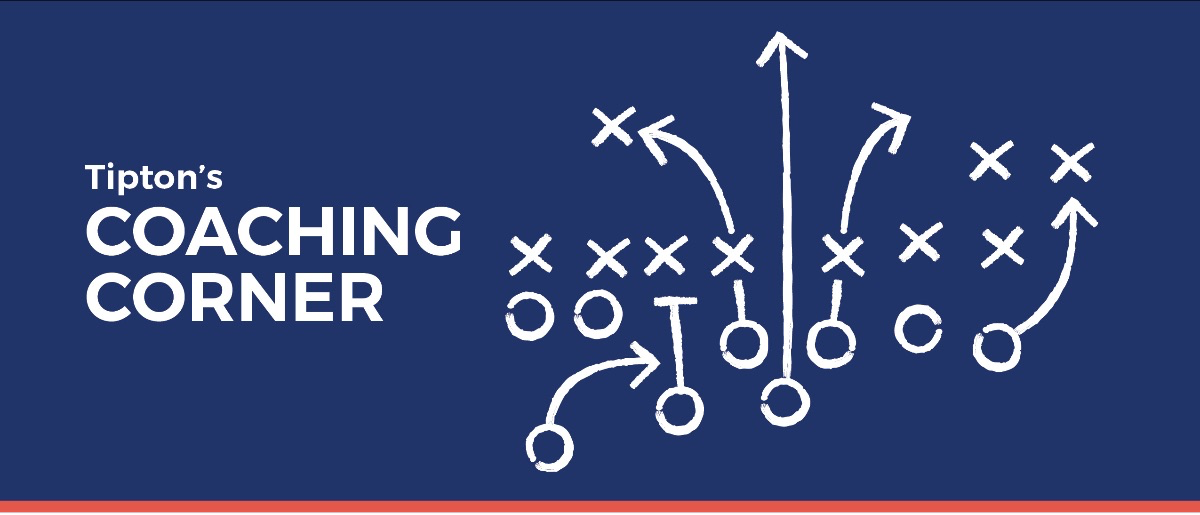
October 2024

Tipton Health and Kirby Bates Associates Announce Strategic Alliance
Tipton Health (www.tiptonhealth.com), the nation’s premier nursing consultancy, and Kirby Bates Associates, an industry-leading healthcare executive search firm with nurse executive leadership advisory solutions, recently announced an alliance to tap the expertise and nurse–centered innovations of each organization to advance nurse leaders, accelerate nursing excellence programs, and optimize hospitals’ and healthcare systems’ investments in nursing.
The Tipton Health–Kirby Bates Alliance will focus on strengthening candidate selection, transition preparation, and support for new nurse leaders by integrating Tipton Health’s proprietary nursing program assessment and prioritization tools into Kirby Bates’ highly successful Nurse Executive Search program.
In addition, the Alliance will develop interim nurse leadership solutions to provide organizations with expertly matched nursing excellence leaders supported by Tipton Health’s industry–leading nursing excellence consulting team and tools.
“We are proud to work with Kirby Bates, who shares our mission to advance nursing practice and nursing excellence,” said Dan Tipton, president and CEO of Tipton Health. “Through this effort, we will better prepare nurse leaders for success and provide hospitals with additional options to accelerate nursing excellence programs that will improve the nursing work environment, engage nurses, develop nurse managers, and ultimately, yield better patient outcomes and organizational performance.”
“Kirby Bates Associates is proud to formalize our ongoing collaboration with Tipton,” reports Melissa A. Fitzpatrick, MSN, RN, FAAN, President of Kirby Bates Associates. “Together we are pursuing our shared mission to improve the delivery of patient care through nurse and executive leadership that enhances organizational performance. This partnership marks an exciting milestone as we execute our strategy to lead the market by expanding our services across the C–suite and throughout the care continuum.”

Check Out Tipton Health Client Presentations at the Magnet Conference
We are fortunate to work with so many of the nation’s leading nursing teams, who are absolutely committed to advancing practice. Many will be sharing their nursing experiences, research, and evidence-based practices at this year’s Magnet Conference, Oct. 30-Nov. 1, in New Orleans, LA.
Be sure to support your peers and attend their sessions. The following is a partial list of Tipton Health client presentations. For more information, visit https://magnetpathwaycon.nursingworld.org/concurrent-sessions
- Wednesday, October 30, 2024, 3-4 p.m., RN Ambassador Program: Bedside Nurses Taking Action on RN Vacancy, Penn State Health Hershey Medical Center
- Thursday, October 31, 2024, 8-9 a.m., Workplace Violence: Clinical Nurse Impacts Feeling Safe, West Kendall Baptist Hospital
- Thursday, October 31, 2024, 8-9 a.m., Transforming the Work Environment to Retain Nurse Leaders, Augusta Health (NOTE: This project was completed with support from Tipton Health’s Nursing Excellence Consulting Team!)
- Thursday, October 31, 2024, 8-9 a.m., Mock Code: Designed to Empower Ambulatory Practice, Vanderbilt University Medical Center
- Thursday, October 31, 2024, 8-9 a.m., Enhancing Skill Mix in Ambulatory Care Utilizing a Collaborative Medical Assistant Preparation Program, Harris Health System
- Thursday, October 31, 2024, 8-9 a.m., APRNS Decreasing Disparities; Enhancing Access to Pediatric Eye Care, University of Michigan Health
- Thursday, October 31, 2024, 9:30-10:30 a.m., Decreasing Nurse Turnover: An Innovative Approach, Salem Health
- Thursday, October 31, 2024, 9:30-10:30 a.m., Virtual Vigilance, Vanderbilt University Adult Hospital
- Thursday, October 31, 2024, 9:30-10:30 a.m., Predicting Patient Risk of Falling Using Artificial Intelligence, El Camino Health
- Thursday, October 31, 2024, 9:30-10:30 a.m., Combatting Nursing Shortage and Burden with Virtual Nursing, Morristown Medical Center
- Thursday, October 31, 2024, 9:30-10:30 a.m., The Impact of Virtual ICU in the Neuroscience ICU, Northwell Health
- Thursday, October 31, 2024, 11 a.m.-Noon, Empowering Nursing with Resources, NewYork Presbyterian and Northwell Health
- Thursday, October 31, 2024, 11 a.m.-Noon, Registered Apprenticeship Supports Future Nursing Workforce, Ascension Seton
- Thursday, October 31, 2024, 11 a.m.-Noon, Shining a Spotlight on Early Deterioration, the Star Nurse, Inova Fairfax
- Thursday, October 31, 2024, 11 a.m.-Noon, Improving Clinician Well-Being: Evidence from US and Europe, Linda Aiken, University of Pennsylvania (Tipton Health is an Official Stakeholder of Magnet4Europe)
- Thursday, October 31, 2024, 2-3 p.m., Nursing Community Outreach and Engagement – A Community Health Needs Assessment Approach, MedStar Washington Hospital Center
- Thursday, October 31, 2024, 2-3 p.m., Optimizing Perioperative Pain Outcomes in SUD & Chronic Pain, Northwell Mather Hospital
- Thursday, October 31, 2024, 2-3 p.m., Preceptor Pep Rallies: Empowering Preceptors by Going Back to Basics, Inova Fairfax
- Friday, November 1, 8-9 a.m., Rainbow Developmental Care Tool in Neonatal Intensive Care Unit, Johns Hopkins All Children’s Hospital
- Friday, November 1, 9:30-10:30 a.m., Redesigning a Structurally Empowered Nurse Residency Program, CentraState Medical Center
While at the Magnet Conference, please stop by and see us at Booth 1741!

The Challenges of Magnet® for Children’s Hospitals
Finding examples that meet the requirements of ANCC Magnet® designation can be challenging for acute care children’s hospitals, which typically don’t have the size or variety of unit types of larger integrated hospitals. That hasn’t stopped children’s hospitals from pursuing nursing excellence, with about 20% of the nation’s children’s hospitals recognized with Magnet® status.
Tipton Health works with many of these children’s hospitals and has developed some ideas on how they can respond to some of the more challenging designation examples.
- TL12: Nurse advocacy for pediatric nursing and child health at external forums may include child health policy, funding for pediatric research, healthcare coverage, and access to services. Nurses may advocate with Children’s Hospital Association for one of the six domains in the Institute of Medicine’s STEEEP framework for quality health care. Other strong ideas include advocating for pediatric and adult hospital programs, partnerships, and structured referral arrangements for pediatric patient populations with chronic and medically complex health conditions that develop in childhood, such as cystic fibrosis, congenital heart disease, and leukemias. Patients will still need treatment for these conditions after aging out of pediatric care.
- EP7EO: Children’s hospitals provide care that’s designed for children’s needs, including tailored communications, extra time, and additional monitoring. Caregivers are compassionate and understand children’s physical, mental, and behavioral development. They’re equipped to treat a wide range of conditions from earaches and asthma attacks to organ transplants, cardiac surgery, and cancer. Pharmaceutical services cater to the unique age and weight-based dosing that children require. Highlight interprofessional care conferences to meet the needs of children with complex care needs involving multiple specialties. How do surgical teams, medical subspecialty teams, and ancillary services establish and revise plans of care for specific patient populations? How do inpatient teams and ambulatory care settings coordinate care needs for patient populations? Consider age-related populations (e.g., neonates, children, or adolescents), children of all ages with an injury or critical illness, children living with a chronic condition, and preventative and well-child care delivered in primary care practices, school-based health clinics, or via telehealth.
- EP15: Children represent a vulnerable patient population with legal stewardship that families manage. Pediatric nurses access resources such as the Ethics Committees and the ANA Code of Ethics to navigate a wide variety of ethical dilemmas. Ethical issues may arise related to consent and assent, informed consent, confidentiality, child maltreatment, moral distress, and end-of-life care decisions. Ethical issues may also arise with the allocation of scarce resources, like donor organs, prenatal testing, and medication administration, such as when an adolescent patient refuses treatment.
- SE13: Children may be too young to talk, have trouble expressing themselves, or have limited English proficiency, so effective communication is important. Nurses may provide socially sensitive care by providing access to augmentative and alternative communication (AAC) or child life specialists that engage the child in therapeutic play. School reentry programs for children with chronic conditions provide a unique opportunity to showcase pediatric nurses’ socially sensitive care. Pediatric decision-making provides another unique opportunity with nurses and other healthcare professionals helping families navigate adolescent autonomy in having a voice in care decisions. Trauma-informed care exemplifies socially sensitive care related to adverse childhood events and violence against children. Children’s hospitals often partner with local health departments to ensure culturally responsive healthcare for refugee and immigrant children.
- NK9EO: Children’s hospitals are designed (or redesigned) with children in mind, with age-appropriate equipment, colors, and chair heights. Many children’s hospitals require more square footage to organize care units, such as medically fragile infants versus adolescents. Family-centered spaces across all patient care areas include sleeping areas for parents, secured storage areas, reflection and relaxation spaces, loungers, and food prep and laundry facilities.
Want to learn more? You can discuss your narratives and data at any time with your Tipton Health Nursing Excellence Advocate. Contact Elizabeth Abrahams at elizabeth@tiptonhealth.com

Coaching Corner: Strong Alternatives to Invites as Evidence
When writing a non-EO, MPDs and Magnet® writing teams face a challenge: how to demonstrate that an event actually occurred. Often, it is tempting to attach Outlook and Teams calendar invites or meeting agendas; however, appraisal teams do not often consider these documents to be strong evidence that the meeting or event occurred. Because the invitation and agenda pre-date the event, they cannot demonstrate that the event really took place.
It is best writing practice to attach a document dated after the event that demonstrates the nurse’s participation. Strong supporting evidence demonstrating an event occurred might include follow-up emails dated after the event, meeting notes or minutes, or a slide deck presented at the event.
The source’s intent and the particular narrative will determine the sort of evidence that is appropriate and can support the narrative. For example, the TL9 narratives ask for evidence demonstrating the mentoring plan and mentorship of the nurse. To demonstrate that a meeting between the mentor and mentee occurred, we might attach meeting notes taken during the meeting, a follow-up email describing key takeaways or actions from the meeting, or feedback on an activity discussed during the meeting. Evidence demonstrating a meeting occurred to discuss a proposal to purchase a new resource in TL7 might include meeting minutes, follow-up approval emails, or the actual proposal presented and discussed during the meeting. Similarly, evidence for SE14 must show that recognition events occurred, so a newsletter article describing the event, an event program that lists the nurse and recognition activity, or a slide deck presented at the recognition dinner would be stronger than the invitation to the event.
When collecting evidence of meetings and events for non-EOs, the best question to ask is, “Does this show that the meeting was planned or that it actually took place?” If it does not show that the meeting or event has taken place, we will need to dig a little deeper to strengthen the evidence. If you are unsure whether the evidence is strong, reach out to Tipton Health’s Nursing Excellence Validation Team for help selecting your strongest evidence.

Understanding Magnet® EP20EO Ambulatory Nurse-Sensitive Indicator Requirements
If you’re working towards a Magnet® Designation, focusing on ambulatory nurse-sensitive indicators is key. These indicators are essential for highlighting nursing excellence in outpatient care and showing how nursing impacts patient outcomes. The ANCC requires organizations seeking Magnet® recognition to report on these indicators to demonstrate their commitment to delivering high-quality care.
What’s Required for EP20EO?
For EP20EO, you’ll need to report on three nurse-sensitive indicators. Two of them must be nationally benchmarked, meaning they’ll be compared to data from organizations across the country. The third indicator doesn’t need to be nationally benchmarked but should still be relevant to your organization’s unique environment. Along with your data, you’ll submit a short narrative explaining why your organization considers the selected indicator to be nurse-sensitive. This narrative requirement is a shift from what is required in EP19EO.
Choosing Your Indicators
You have the flexibility to choose which indicators to report. Some of the most commonly used measures include:
- Falls With Injury
- Surgical Errors
- Patient Burns
- Door-to-Balloon Time
- Door-to-Needle Time
At Tipton Health, we often suggest using Patient Burns and Surgical Errors as two of your indicators. These are considered “never events” – events that should never happen in a healthcare setting. Since these events are rare, your organization is likely to outperform benchmarks, which is a positive reflection of your performance.
Things to Keep in Mind When Reporting
Not all units within your organization will need to report on every indicator. For example, surgical errors and patient burns typically occur in perioperative areas, so only those units will report these. For units that don’t need to report or are not applicable, you can simply list them as “Ambulatory Care Setting ineligible per vendor.” This is completely acceptable and shouldn’t be a concern. These non-reporting areas will not be included in your overall score’s denominator.
To meet EP20EO requirements, more than 50% of your reporting units must show outperformance. Also, when submitting your data, be sure to include the measure of central tendency (like mean, median, or mode).
Need Assistance?
Choosing the right ambulatory measures can be tricky, but you don’t have to figure it out alone. If you have questions about which measures to select, reach out to your Magnet® analyst or contact Data Services at Tipton Health. We’re here to guide you every step of the way to help you achieve Magnet® Designation!

Connecting the Dots between Research, EBP, and QI: Part Two
Welcome to part two of our series on Research, Evidence-Based Practice (EBP), and Quality Improvement (QI) methods, this time with a focus on EBP.
The purpose of EBP is to utilize the best already available scientific and experiential evidence to influence patient care decisions toward more positive outcomes. This differs from nursing research where you would conduct your own study to determine the results.
When a literature review reveals an existing practice that your hospital hasn’t adopted yet, with strong evidence to support it, you’ll probably want to follow an EBP decision-making model.
A good example could be implementing a new evidence-based clinical practice guideline to prevent proning-related HAPIs or a revision to an existing practice to prevent medical device-related HAPIs.
EBP has a knowledge translation element and is an ongoing process as evidence evolves. When starting a new initiative at your hospital, after completing your literature review or other methods to identify alternatives, you can use an EBP model to guide the initiative steps. This will be easier if your organization already uses a strong EBP model, but for those that may not be there yet, you’ll want to ensure that you’re capturing the action steps of the initiative while highlighting the evidence supporting it, along with your team members’ names and dates of the events.
Magnet® examples like NK5 and NK6 both specifically require an EBP initiative rather than research or QI. These two examples require us to demonstrate implementations of new/revised evidence-based practices and the implementation of professional organization specialty standards backed up by EBP, respectively.
Some great questions to ask when beginning an EBP initiative are “Does our current policy, practice, or standard operating procedure reflect the best currently available evidence?” and “Is our practice of optimal quality compared to the evidence for optimal outcomes?”
EBP initiatives will generally use a pre- and post-design to compare the outcomes before and after the evidence-based changes are implemented and evaluate whether the change produced an improvement. As you go through each step with your team, ensure that you keep detailed notes or record meeting minutes to capture who was involved with each step, who did what, and demonstrate how the evidence from your literature review was used to complete the initiative. This information will all be important to craft your narrative and supporting documents.
Join us for part three of this series in the next issue when we tackle QI projects.

Meet the Team -- Cooper Schroeder, BA
Cooper is an editor on the Nursing Excellence Validation Team (NEVT). He earned his BA in Creative Writing with a minor in Technical Writing from the University of North Carolina at Charlotte (Go 49ers!). We sat down with him to learn more about his background, what brought him to Tipton Health, and the advice he has for our partners.
What would you say is the most rewarding part of working on the NEVT?
The most rewarding part of working on the NEVT is when we get to read about the incredible efforts nurses make—going above and beyond their duties—and then help shape the narrative to highlight those contributions. For example, in ethical dilemma cases where a nurse might spend their own money to treat a patient to a meal, we ensure that these selfless acts are recognized and celebrated.
What guided you to technical writing?
After earning an English degree, I supplemented that knowledge by earning an Excel certification, which led me to a contract role at Bank of America as their onboarder. While there, I noticed the lack of a formal onboarding process, so I compiled informal notes from other employees and assistants to develop a comprehensive Onboarding Guide. This guide ended up being adopted across all of Bank of America. That moment was one of my highlights in both enjoyment of and impact with technical writing.
What attracted you to Tipton Health?
I started college as a biology major with the goal of creating affordable prosthetics. My interest in science and medicine never waned, and my early education background, combined with my technical writing experience, naturally led me to Tipton Health where I am able to provide a different type of support within medicine.
What is your favorite Magnet® example?
When it comes to Magnet® examples, my favorites are definitely the Ethical Dilemma and Nurse Recognition. These two stand out because they highlight the heart and soul of nursing—humanity, compassion, and unwavering dedication. The Ethical Dilemma example showcases the complex, real-world situations nurses face every day and their commitment to doing what is right, even when the decisions are tough. It reflects the core values of nursing and the ethical standards that guide our practice.
On the other hand, Nurse Recognition is all about celebrating the hard work, passion, and perseverance of nurses. It shines a light on their everyday contributions, the moments they go above and beyond for their patients, and the strong bonds they build within their teams. This example resonates deeply with me because it captures the spirit of nursing—valuing each individual’s role and recognizing the profound impact they have on patient care and outcomes.
Do you have any recommendations that you think would help clients who are close to submission?
Thoroughly double-check all your dates, both in your file names and within the narrative itself. Dates are often one of the first things the ANCC looks at, and any discrepancies can quickly trigger an additional documentation request. Ensuring that all dates are consistent and accurate can save you time and help you avoid unnecessary delays in the submission process.
What hobby are you most passionate about and why?
I’m most passionate about reading. There’s something magical about diving into a book and being transported to a whole new world. Unlike movies or TV shows, reading allows your imagination to take the lead, creating a more immersive and personal experience as you build the story in your mind. Right now, I’m exploring a series called Ten Realms, and it’s been a fantastic adventure so far!

The Tipton Health Complimentary Assessment
The Tipton Health Assessment was developed to help our nursing partners to celebrate their nursing excellence triumphs and prioritize their outstanding challenges. The assessment is complimentary to all Tipton Health partners, because it aligns our work with our client’s needs and prepares our partners for a successful nursing excellence journey.
How The Assessment Works
- Our partners provide information and data related to the evidence-based nursing excellence structures that most impact nursing leadership, the work environment, the advancement of the profession, and ultimately patient outcomes.
- We deliver a comprehensive analysis that includes a projected timeline to achieve nursing excellence milestones, such as ANCC Magnet® Designation or Pathway to Excellence® Program Designation. We prioritize nursing excellence structures and evidence-based solutions that will have the most impact.
We deliver the priorities aligned with the organizations strategic priorities, return on investment, and nursing excellence frameworks. The alignment supports nurse leaders in their advocacy and communication of the value nursing excellence brings to an organization at all levels.
In addition to sharing our findings with nurse leaders, we also engage key stakeholders, such as the C-suite as a way to support the advancement of and investment in nurses.
CNOs and their teams have expressed tremendous gratitude and recognized the level of expertise, attention to detail and investment in time that Tipton Health commits to this complimentary process. The impact in some cases has resulted in organization’s full investment in a multiyear plan to support nursing excellence as well as providing organizations a road map for their nursing strategic plan and journey of nursing excellence. Most importantly, we have established meaningful relationships with nursing partners through this process. The process alone serves as an intervention that enables us to let nursing teams know that they are not alone in their challenges as we help forge a path forward.
We invite any of our partners to participate in this complimentary program. Whether you are considering designation for the first time, a redesignation, or you just want to know where you stand and what step to take next, we are happy to partner with you for this complimentary service.
CURRENT ISSUE
PAST ISSUES
Let Us Know How We Are Doing and How We Can Better Support You.
We are absolutely dedicated to your success. We form deep partnerships with our clients based on trust. That requires continuous conversation. Tell us how we can better serve you.
